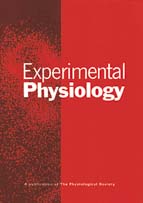Crossref Citations
This article has been cited by the following publications. This list is generated based on data provided by
Crossref.
ALLAN, STUART M.
2000.
The Role of Pro‐ and Antiinflammatory Cytokines in Neurodegeneration.
Annals of the New York Academy of Sciences,
Vol. 917,
Issue. 1,
p.
84.
Haas, H. S.
and
Schauenstein, K.
2001.
Immunity, hormones, and the brain.
Allergy,
Vol. 56,
Issue. 6,
p.
470.
Hayley, Shawn
Merali, Zul
and
Anisman, Hymie
2002.
The acute and sensitization effects of tumor necrosis factor-α: implications for immunotherapy as well as psychiatric and neurological conditions.
Acta Neuropsychiatrica,
Vol. 14,
Issue. 6,
p.
322.
Hanisch, Uwe‐Karsten
2002.
Microglia as a source and target of cytokines.
Glia,
Vol. 40,
Issue. 2,
p.
140.
Murray, H.J.
and
O’Connor, J.J.
2003.
A role for COX-2 and p38 mitogen activated protein kinase in long-term depression in the rat dentate gyrus in vitro.
Neuropharmacology,
Vol. 44,
Issue. 3,
p.
374.
Avital, Avi
Goshen, Inbal
Kamsler, Ariel
Segal, Menahem
Iverfeldt, Kerstin
Richter‐Levin, Gal
and
Yirmiya, Raz
2003.
Impaired interleukin‐1 signaling is associated with deficits in hippocampal memory processes and neural plasticity.
Hippocampus,
Vol. 13,
Issue. 7,
p.
826.
Song, Cai
and
Horrobin, David
2004.
Omega-3 fatty acid ethyl-eicosapentaenoate, but not soybean oil, attenuates memory impairment induced by central IL-1β administration.
Journal of Lipid Research,
Vol. 45,
Issue. 6,
p.
1112.
Heida, James G.
and
Pittman, Quentin J.
2005.
Causal Links between Brain Cytokines and Experimental Febrile Convulsions in the Rat.
Epilepsia,
Vol. 46,
Issue. 12,
p.
1906.
Park, Chang Sin
Gong, Ruomu
Stuart, Joshua
and
Tang, Shao-Jun
2006.
Molecular Network and Chromosomal Clustering of Genes Involved in Synaptic Plasticity in the Hippocampus.
Journal of Biological Chemistry,
Vol. 281,
Issue. 40,
p.
30195.
GOSHEN, INBAL
and
YIRMIYA, RAZ
2007.
Psychoneuroimmunology.
p.
337.
Goshen, Inbal
Kreisel, Tirzah
Ounallah-Saad, Hadile
Renbaum, Paul
Zalzstein, Yael
Ben-Hur, Tamir
Levy-Lahad, Efrat
and
Yirmiya, Raz
2007.
A dual role for interleukin-1 in hippocampal-dependent memory processes.
Psychoneuroendocrinology,
Vol. 32,
Issue. 8-10,
p.
1106.
Goshen, Inbal
and
Yirmiya, Raz
2009.
Stress ‐ From Molecules to Behavior.
p.
243.
Gonzalez, Patricia Verónica
Schiöth, Helgi Birgir
Lasaga, Mercedes
and
Scimonelli, Teresa Nieves
2009.
Memory impairment induced by IL-1β is reversed by α-MSH through central melanocortin-4 receptors.
Brain, Behavior, and Immunity,
Vol. 23,
Issue. 6,
p.
817.
Huang, Zhen-Bo
and
Sheng, Guo-Qing
2010.
Interleukin-1β with learning and memory.
Neuroscience Bulletin,
Vol. 26,
Issue. 6,
p.
455.
Wang, Chuan-En
Li, Shihua
and
Li, Xiao-Jiang
2010.
Lack of interleukin-1 type 1 receptor enhances the accumulation of mutant huntingtin in the striatum and exacerbates the neurological phenotypes of Huntington's disease mice.
Molecular Brain,
Vol. 3,
Issue. 1,
Zhuang, Liying
Liu, Xiaoyan
Xu, Xiaohui
Yue, Chunxian
Shu, Hao
Bai, Feng
Yu, Hui
Shi, Yongmei
and
Zhang, Zhijun
2012.
Association of the interleukin 1 beta gene and brain spontaneous activity in amnestic mild cognitive impairment.
Journal of Neuroinflammation,
Vol. 9,
Issue. 1,
Li, Peng
Zhang, Gang
You, Hai-yan
Zheng, Ran
and
Gao, Yu-qi
2012.
Training-dependent cognitive advantage is suppressed at high altitude.
Physiology & Behavior,
Vol. 106,
Issue. 4,
p.
439.
Costello, Derek A.
and
Lynch, Marina A.
2013.
Toll‐like receptor 3 activation modulates hippocampal network excitability, via glial production of interferon‐β.
Hippocampus,
Vol. 23,
Issue. 8,
p.
696.
Lawson, Marcus A
Parrott, Jennifer M
McCusker, Robert H
Dantzer, Robert
Kelley, Keith W
and
O’Connor, Jason C
2013.
Intracerebroventricular administration of lipopolysaccharide induces indoleamine-2,3-dioxygenase-dependent depression-like behaviors.
Journal of Neuroinflammation,
Vol. 10,
Issue. 1,
Lichtwark, I. T.
Newnham, E. D.
Robinson, S. R.
Shepherd, S. J.
Hosking, P.
Gibson, P. R.
and
Yelland, G. W.
2014.
Cognitive impairment in coeliac disease improves on a gluten‐free diet and correlates with histological and serological indices of disease severity.
Alimentary Pharmacology & Therapeutics,
Vol. 40,
Issue. 2,
p.
160.


